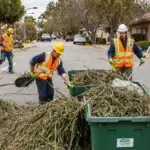Every year on October 10, Children’s Environmental Health Day emphasizes the environmental risks children face from pollution, calling for efforts to create a safer and healthier world for the younger generation.
This initiative, led by the Children’s Environmental Health Network, involves more than 150 organizations, including the Environmental Working Group (EWG). The day aims to raise awareness of the threats posed by environmental pollutants that can affect children’s health, such as air and water pollution, contaminated food, and toxic substances found in everyday items like toys and clothing.
Children are particularly vulnerable to harmful chemicals such as PFAS, lead, food additives, and dyes, primarily because their bodies are still developing. The risks associated with these substances are often more severe in lower-income neighborhoods and can affect children at home, in schools, or other everyday environments.
The negative health impacts of toxic chemicals are well-documented, with potential effects ranging from reduced IQ to behavioral issues, skin conditions, and even early puberty, depending on the substance.
Food and Drink:
Certain food additives, like artificial dyes, have been linked to conditions such as hyperactivity and ADHD in children. To address these concerns, California recently passed a law banning six harmful food dyes in public schools—a first for the United States.
To help parents make more informed decisions, the Environmental Working Group (EWG) developed “Food Scores,” a tool that rates over 80,000 foods based on nutrition, ingredients, and processing concerns. It serves as a helpful guide for parents to find healthier options during grocery shopping, avoiding ultra-processed and chemical-laden products.
Water is another source of harmful chemical exposure, with PFAS contamination affecting water supplies across the United States. Lead contamination in water, often stemming from aging pipes and infrastructure, poses another significant risk, especially in schools, where outdated water fountains can be a hidden source of lead exposure for children.
Cosmetics:
The rise of skincare trends among younger age groups, such as the “Sephora kids” phenomenon, has raised concerns about the potential risks associated with products not designed for children’s sensitive skin. Many of these products contain ingredients like retinol, vitamin C, and exfoliating acids, which can cause adverse effects on younger skin.
EWG’s research shows that 38% of Generation Z users apply skincare products daily, and 59% use makeup at least monthly. To help protect children from harmful chemicals in personal care products, the EWG offers resources like its Skin Deep® database, which highlights safer product choices and features those that meet the strict transparency and health standards of the EWG Verified® label.
Toys:
While toys are meant to bring joy, some may contain hazardous chemicals, such as phthalates, bisphenol A (BPA), flame retardants, and lead. Even older, heirloom toys could pose risks due to the presence of lead-based paints. Choosing toys made from natural materials like wood, bamboo, hemp, or organic cotton is a safer alternative for children’s playtime.
Pesticides:
Pesticides sprayed near schools and homes also pose a significant risk to children. In 2023, EWG identified more than 4,000 elementary schools within 200 feet of crop fields, where pesticides may be applied. Research indicates that pesticide drift can occur miles away from targeted areas, potentially exposing children to harmful chemicals even if their schools are not directly adjacent to agricultural fields.
Additionally, pesticide residue on fruits and vegetables can be a source of exposure for children. EWG’s Shopper’s Guide to Pesticides in Produce™ provides a list of the most contaminated fruits and vegetables, encouraging parents to choose organic alternatives to reduce the risk.
Protecting Children:
While it can seem daunting to navigate the various risks children face from environmental chemicals, there are steps that can be taken to reduce exposure. Simple changes like opting for organic produce or switching to safer personal care products can make a significant difference.
Policymakers are also making strides to protect children’s health. For instance, California’s ban on certain food dyes and the federal EPA’s new rule limiting toxic PFAS in drinking water are examples of progress toward safeguarding public health.
Children’s Environmental Health Day also coincides with the EPA’s Children’s Health Month in October. This year’s theme, “Growing Healthy, Growing Happy,” encourages parents, caregivers, and educators to utilize the EPA’s webinars and resources to better protect children from environmental risks.







